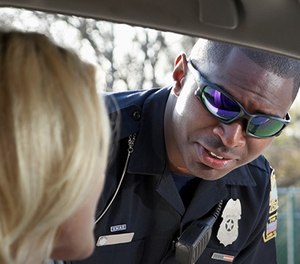Traffic stops have been a bread-and-butter activity of police officers since the nation’s first traffic laws passed by the state of Connecticut in 1901 limiting vehicle speeds to 12 miles per hour in cities and 15 mph on rural roads.
New York prohibited drunk driving in 1910. The red, yellow and green traffic lights first appeared in 1930. Seatbelts first appeared in American automobiles in 1950. The U.S. Department of Transportation was born in 1966.
Over the years a plethora of laws and regulations have resulted in safer automobile travel that we all take for granted. Are we ready to turn back the clock? A recent survey, that showed mixed results from the public on enforcement of traffic laws by police officers, may indicate a public movement in that direction.

There is wide support for police officers to intercede in suspected drunk driving, reckless driving and speeding over 20 mph over the limit.
The violations the public want police to enforce
There is wide support for police officers to intercede in suspected drunk driving, reckless driving and speeding over 20 mph over the limit. Far fewer respondents supported armed police officers as the best option for stopping drivers in vehicles with cracked windshields, a single burned-out light, lesser speeding violations, or noisy mufflers, excessive window tint, or something hanging from the rearview mirror.
A significant majority of voters (including respondents citing affiliation with either major political party) would support revising laws to remove the authority of police officers over minor violations that now are grounds for a vehicle stop.
These opinions, as well as some legislation already reflects, seem to have been unaffected by arguments that with the current increase in crime the opportunity for police to make contact with drivers who may be involved in a violent crime such as possession of weapons, drugs, or driving with warrants or invalid license.
Impressions need to be informed by facts
Opinion surveys are just that – opinions. There is no requirement that the opinions are based on facts, and the feelings underlying the opinions can be powerful. The survey report makes mention of the post-George Floyd era, whose arrest and death were completely unrelated to a traffic stop but galvanized a narrative of fearing the police. But if the impression of the public is that a traffic stop is an opportunity for law enforcement to engage in deadly force or to profile minority community members, that is a feeling that needs to be informed by facts.
The dialog that police leaders must have with the public should note that the decision on law enforcement powers comes from legislators, with an inherent danger to public safety when individual police agencies decide what laws they will or will not enforce. Setting priorities is good management, undermining legislative intent is another. Any movement for non-enforcement must come from duly elected lawmakers.
A criminal interdiction tool
The major argument that we see for traffic stops is that they are an important tool for criminal interdiction.
The Supreme Court in Whren v. United States affirmed that if a car stop is based on a traffic violation, the contact is legal even if the officer really wanted to contact the driver or passengers for an investigative purpose. Much criminal interdiction results from traffic stops for relatively minor violations. From a legal standpoint, this makes sense. From a crime control standpoint, this makes sense. From a liberty standpoint, the debate is in shades of gray.
Public safety from dangerous vehicle conditions must have a prominent place in advocating for the status quo in traffic stops. Lack of turn signal use, broken tail lights, windshield vision obstruction and improper vehicle registration are probably not accurately reflected in crash statistics as a primary or secondary factor in collisions. The impact of driving 10 mph over the speed limit is determined by physics, not demographics. The likelihood of the presence of an equipment or licensing violation being an indicator of other unsafe driving deserves documentation, especially if there is a statistical correlation with criminality.
Police leaders may gain little traction if their sole argument is that they want to see inside more people’s cars to see if anything bad is going on. Gathering good data justifying one side of the argument over the other is an essential part of this important discussion.


